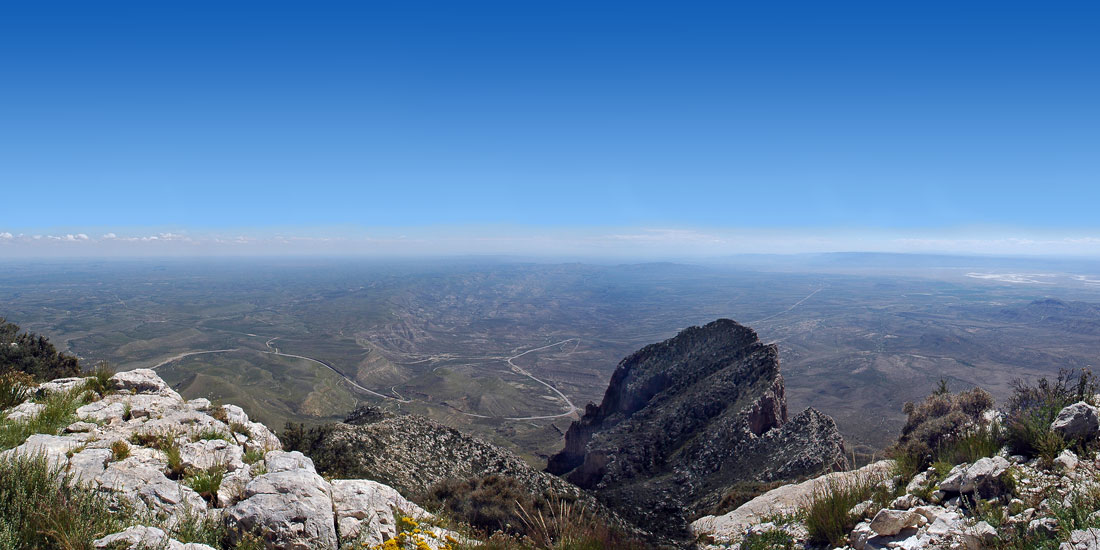
CARLSBAD CAVERNS AND GUADALUPE MOUNTAINS
A One-Day to the Northwest from Marfa
Stop 1: Prada Marfa
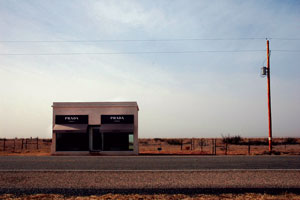
Prada Marfa is the work of a collaborative duo based in London and Berlin, Michael Elmgreen (b. 1961, Denmark) and Ingar Dragset (b. 1969, Norway). The pair has created together since the 1990s, with the Prada boutique built in 2005. The creators asked Miuccia Prada to consult. She collaborated enthusiastically, chose the items to display, and allowed use of the official Prada logo. Elmgreen and Dragset’s project has earned admirers, vandals, and critics. In an article in Vogue magazine, Prada Marfa was described as “the fashion girl’s Statue of Liberty.” Meant to have a natural life and blend with surroundings over time as the adobe crumbles from erosion, the toll of vandalism versus restoration confound the equation.
Stop 2: Van Horn

Van Horn grew as a Texas railroad town for the Texas and Pacific
Railway lines and for the San Antonio-El Paso overland mail system.
Visitors needed a hotel, so in the 1930s El Pasoan investor Charles
Bassett built Hotel El Capitan to serve travelers at the crossroads of
west Texas tourism. Renowned architect Henry Trost designed the hotel.
Trost’s architectural design featured Mission and Pueblo Revival styles
plus touches of everything from Victorian to Art Deco.  Details of Trost’s architectural design in Hotel El Capitan are shown in the staircase photo at the right.
Details of Trost’s architectural design in Hotel El Capitan are shown in the staircase photo at the right.
Stop 3: Guadalupe Mountains
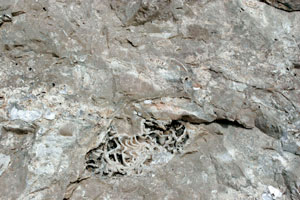
Guadalupe Mountains National Park (top photo) rises from 3,689 feet at the gypsum dunes to 8,749 feet at the top of the highest peak in Texas: Guadalupe Peak. This park is a magnet for geologists wishing to explore the Middle Permian geology of the region, a period from 260 to 270 million years ago during which layers of mud and sediments accumulated at the bottom of an ancient sea creating fossil-preserving limestone. Subsequent uplift and erosion exposed the wonderful plant and animal fossils visible today.
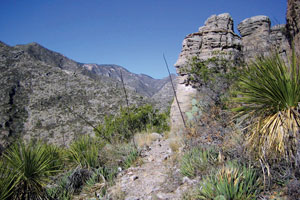
For a hike, take the Permian Reef Trail (at right) that begins at the McKittrick Canyon Visitor Center. The trail winds gradually from the canyon bottom to the top of the ridge, for a total elevation gain of 2,000 feet. Much of the story of how the mountains were formed is told in the first seven stops. It is a 4-mile hike, but even if you turn around at the halfway point (stop 15) you can still enjoy the scenic views and learn about the geology at exhibits that line the trail. You may see Ammonoid fossil, like photo at left.
Stop 4: Carlsbad Caverns National Park
As soon as you get to Carlsbad Caverns National Park, you realize you’re somewhere unlike any place you’ve ever been before. The horizon wobbles, the plants dance, you worry that only inches separate the road you’re driving on and the ceiling of a giant cave below. Around you, the desert seems barren, but is full of plants. The desert above, the cave below, even the sounds around you are like none you’ve heard before.
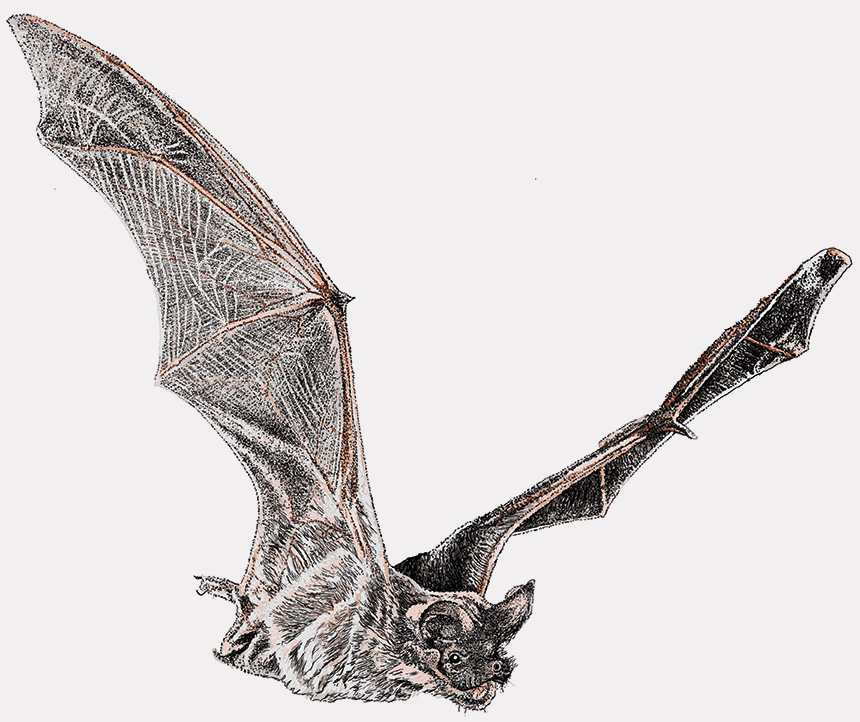
How Carlsbad Caverns came to be echoes the strangeness and otherworldliness of this place. Most caverns are formed by the erosive action of running water, or by carbonic acid dissolving rock, or a combination of both. Yet sulfuric acid, used in your car battery yet fairly unusual in the natural world, is the key ingredient that dissolved the limestone and carved out the caves that would become Carlsbad Caverns National Park.
The unmatched splendor of this national treasure lies in the cavern features themselves. Huge formations tower over you as you walk the cavern path. Above those enormous slabs of re-deposited limestone, tiny, delicate soda straws sparkle as water slowly drips off. Both rock hard and fragile, the tiniest formations are likely older than you, and the largest are much older than the world’s most ancient civilizations.
On warm summer evenings, stay to see a breathtaking spectacle. Just as the sun starts to sink below the horizon, Mexican free-tailed bats, notable for their dramatic flight displays, take to the air. Evening bat flights of this species can be enjoyed elsewhere, but none compare to the bats of Carlsbad Cavern.
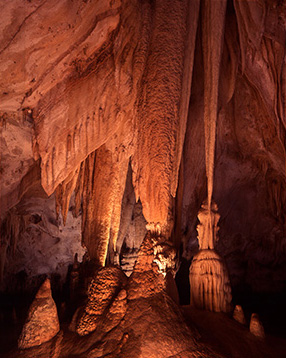
Carlsbad Cavern is not the only amazing cave here. Just a few miles from the entrance to Carlsbad Cavern is Lechuguilla Cave, a first-class cave of amazing beauty. For decades, people knew it as a deep pit that had a little guano and some rubble at the bottom, but not much more. In the 1980s, park managers gave three cavers permission to dig through the rubble. After a few years of weekend work and about sixteen feet of digging, they came upon a small room and from that the passageways took off. Park resource managers and the scientific community agree that Lechuguilla Cave is best left as is and used for study. Scientists studying the cave’s water wear white protective suits to prevent contamination.


